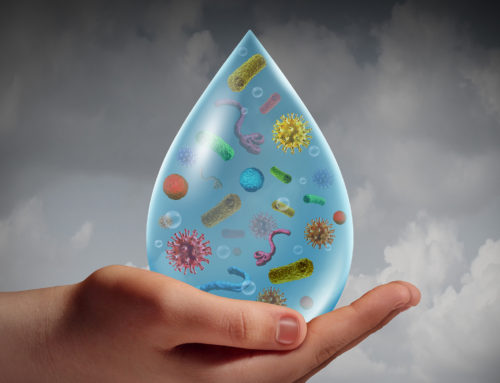
Endocrine disruptors are chemicals that may interfere with the body’s endocrine system and produce adverse developmental, reproductive, neurological, and immune effects in both humans and wildlife. A wide range of substances, both natural and man-made, are thought to cause endocrine disruption, including pharmaceuticals, dioxin and dioxin-like compounds, polychlorinated biphenyls, DDT and other pesticides, and plasticizers such as bisphenol A. Endocrine disruptors may be found in many everyday products– including plastic bottles, metal food cans, detergents, flame retardants, food, toys, cosmetics, and pesticides. The NIEHS supports studies to determine whether exposure to endocrine disruptors may result in human health effects including lowered fertility and an increased incidence of endometriosis and some cancers. Research shows that endocrine disruptors may pose the greatest risk during prenatal and early postnatal development when organ and neural systems are forming.
How do endocrine disruptors work?
From animal studies, researchers have learned much about the mechanisms through which endocrine disruptors influence the endocrine system and alter hormonal functions.
Endocrine disruptors can:
- Mimic or partly mimic naturally occurring hormones in the body like estrogens (the female sex hormone), androgens (the male sex hormone), and thyroid hormones, potentially producing overstimulation.
- Bind to a receptor within a cell and block the endogenous hormone from binding. The normal signal then fails to occur and the body fails to respond properly. Examples of chemicals that block or antagonize hormones are anti-estrogens and anti-androgens.
- Interfere or block the way natural hormones or their receptors are made or controlled, for example, by altering their metabolism in the liver.

When absorbed in the body, an endocrine disruptor can decrease or increase normal hormone levels (left), mimic the body’s natural hormones (middle), or alter the natural production of hormones (right).
What are some examples of endocrine disruptors?
A wide and varied range of substances are thought to cause endocrine disruption.
Chemicals that are known endocrine disruptors include diethylstilbestrol (the synthetic estrogen DES), dioxin and dioxin-like compounds, polychlorinated biphenyls (PCBs), DDT, and some other pesticides.
Bisphenol A (BPA) is a chemical produced in large quantities for use primarily in the production of polycarbonate plastics and epoxy resins. The NTP Center for the Evaluation of Risks to Human Reproduction completed a review of BPA in September 2008. The NTP expressed “some concern for effects on the brain, behavior, and prostate gland in fetuses, infants, and children at current human exposures to bisphenol A.“
Di(2-ethylhexyl) phthalate (DEHP) is a high production volume chemical used in the manufacture of a wide variety of consumer food packaging, some children’s products, and some polyvinyl chloride (PVC) medical devices. In 2006, the NTP found that DEHP may pose a risk to human development, especially critically ill male infants.
Phytoestrogens are naturally occurring substances in plants that have hormone-like activity. Examples of phytoestrogens are genistein and daidzein, which can be found in soy-derived products.
Further Reading
Stories from the Environmental Factor (NIEHS Newsletter)
- Persistent Pollutants Linked to Poor Vaccine Response (January 2016)
- Parma Consensus Statement on Metabolic Disruptors Supported by Niehs Scientists(August 2015)
- Pregnancy Hormone Plays a Role in Fetal Response to Hormone Disruptors (April 2015)
- Researchers Tally Substantial Economic Impact of EDC Exposures (April 2015)
- Researcher Explores Neurobehavioral Effects of Endocrine Disruption (March 2015)
- Papers of Note — Cadmium, Phthalates, and PAHs (January 2015)
- Investigating Medications as a Source of Phthalate Exposure (June 2014)
- NIEHS-Funded Scientists Say More Chemicals Linked to Neurodevelopmental Disorders by Joe Balintfy (March 2014)
- Scientists Begin to Fill in the Gaps in Understanding about Fracking (February 2014)
Printable Fact Sheets
Additional Resources
- Bisphenol A, formaldehyde, epichlorohydrin polymer: Household Products Database – Search the Household Products Database of the National Library of Medicine, which links over 16,000 consumer brands to health effects from Safety Data Sheets for this chemical.
- Bisphenol A-epichlorohydrin copolymer acrylate: Household Products Database – Search the Household Products Database of the National Library of Medicine, which links over 16,000 consumer brands to health effects from Safety Data Sheets for this chemical.
- Bisphenol A, epichlorohydrin polymer: Household Products Database – Search the Household Products Database of the National Library of Medicine, which links over 16,000 consumer brands to health effects from Safety Data Sheets for this chemical.
- Bisphenol A, epichlorohydrin polymer, tall oil fatty acids ester: Household Products Database – Search the Household Products Database of the National Library of Medicine, which links over 16,000 consumer brands to health effects from Safety Data Sheets for this chemical.
- E.hormone: Hormones and the Environment – A gateway to events, research, news, books and learning facts sheets on the impact of environmental estrogens and other hormones on human health.
- FDA – Bisphenol A (BPA) – A summary of FDA’s current perspective on BPA in food contact applications.
- Organ: Talking Glossary of Genetic Terms – “Designed to help learners at any level better understand genetic terms
- WHO Report: State of the science of endocrine disrupting chemicals – An 2012 assessment of the state of the science of endocrine disruptors prepared by a group of experts for the United Nations Environment Programme (UNEP) and WHO.








